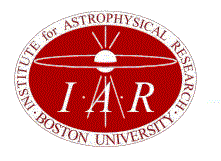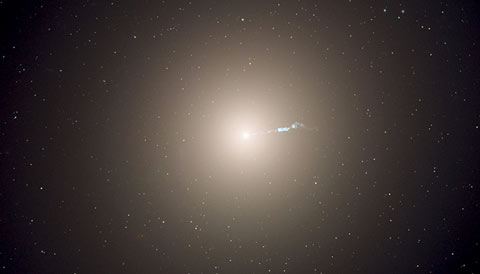
 Studies of Black Holes
and Jets with the
Event Horizon Telescope
Studies of Black Holes
and Jets with the
Event Horizon Telescope 

 Studies of Black Holes
and Jets with the
Event Horizon Telescope
Studies of Black Holes
and Jets with the
Event Horizon Telescope 



Return to Blazar Group research page
Return to Blazar Group main page
|
Title
|
Authors
|
Year |
Journal
|
Volume
|
Pages or
Article no.
|
|
The Event Horizon General Relativistic Magnetohydrodynamic Code
Comparison Project |
Porth, O., The Event Horizon Telescope Collaboration (including Jorstad, S.G. & Marscher, A.P.) | 2019 | Astrophysical Journal Supplement Series |
243 |
26 (40 pages) |
| First
M87 Event Horizon Telescope Results. VI. The Shadow and Mass of
the Central Black Hole |
The Event Horizon Telescope Collaboration (including Jorstad, S.G. & Marscher, A.P.) | 2019 | Astrophysical Journal Letters |
875 |
L6 (44 pages) |
| First
M87 Event Horizon Telescope Results. V. Physical Origin of the
Asymmetric Ring |
The Event Horizon Telescope Collaboration (including Jorstad, S.G. & Marscher, A.P.) | 2019 | Astrophysical Journal Letters |
875 |
L5 (31 pages) |
| First
M87 Event Horizon Telescope Results. IV. Imaging the Central
Supermassive Black Hole |
The Event Horizon Telescope Collaboration (including Jorstad, S.G. & Marscher, A.P.) | 2019 | Astrophysical Journal Letters |
875 |
L4 (52 pages) |
| First
First M87 Event Horizon Telescope Results. III. Data Processing and
Calibration |
The Event Horizon Telescope Collaboration (including Jorstad, S.G. & Marscher, A.P.) | 2019 | Astrophysical Journal Letters |
875 |
L3 (32 pages) |
| First
M87 Event Horizon Telescope Results. II. Array and Instrumentation |
The Event Horizon Telescope Collaboration (including Jorstad, S.G. & Marscher, A.P.) | 2019 | Astrophysical Journal Letters |
875 |
L2 (28 pages) |
| First
M87 Event Horizon Telescope Results.
I. The Shadow of the Supermassive Black Hole |
The Event Horizon Telescope Collaboration (including Jorstad, S.G. & Marscher, A.P.) | 2019 | Astrophysical Journal Letters |
875 |
L1 (17 pages) |